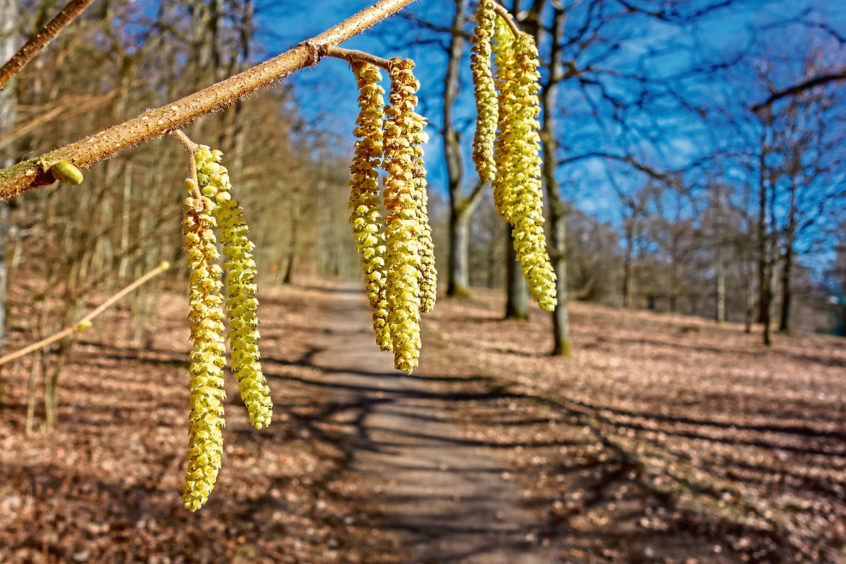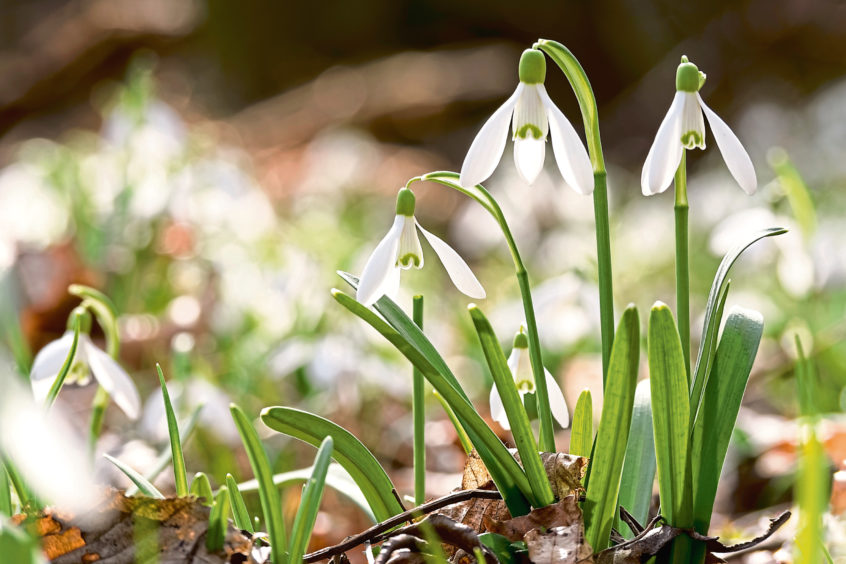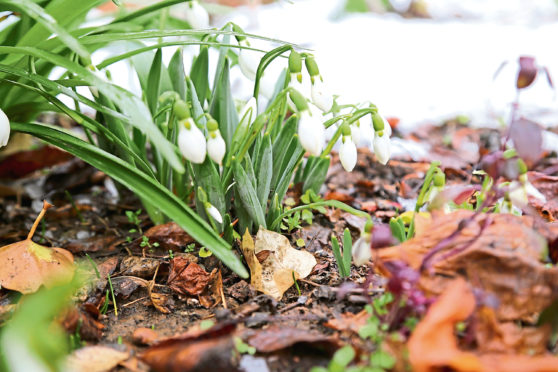The lime-tinted glimmer of catkins adorning the bare branches of this hazel by Rumbling Bridge in Kinross-shire.
By my feet, more green verdant freshness: the emerging spears of snowdrops heralding the approach of a new season.
I heaved a sigh of contentment, for the countryside is on the cusp of remarkable change; a time of renewal and anticipation. It might only be January, but winter’s grip is yielding, albeit reluctantly.
Frosts, snow and bitter winds might still lie ahead, but in an imposing battle of wills, the lengthening days and stronger sun will eventually gain the upper hand.

I examined the catkins and brushed my fingers across a cluster. They were hard and smooth to the touch, but over the coming weeks will lengthen and become fluffy, by which time they are so appropriately known as ‘lamb’s tails’. These dangly green catkins are the male flowers but look closer at the branches and the tiny bud-like red female flowers can be seen too.
There were other signs of spring, a soft warbling breaking above the noise of the tumbling water: a dipper, his white-breasted body bobbing on a rock as he spilled forth his gentle notes to proclaim this stretch of river as his breeding territory.
The cycle of life revolves so quickly. It only seemed like yesterday when the autumnal leaves turned copper and the first arrivals of Arctic geese etched their v-shaped formations across the heavens.
I was in a melancholy mood and reflected upon the winter so far. It has been unusually mild and very wet. Is this all part and parcel of climate change? Yes, I think it probably is. Of course, Scotland’s geographical position on the edge of the north-east Atlantic makes our country prone to climatic flux dependent upon the pattern of the weather systems sweeping-in from the west.

But there is so much more to it than that, and the last few months are just but one piece in a highly complex jig-saw puzzle. Human-induced climate change is happening; it is real and cannot be denied. In my garden last spring there were tree bumblebees and comma butterflies – two species that have moved-in from the south in recent years.
When a youngster, I was addicted to frogs; a boy thing, I suppose. Back then, in my local patch, the first spawn occurred in the middle of March. Now, it is the end of February. That shift in days might not seem much, but in nature terms it is gargantuan.
As the river gurgled over the rocks here at Rumbling Bridge, I wondered about the future and the implications that climate change will wreak upon our varied and diverse wildlife. Nature is adaptable, often incredibly so, but there will always be losers. In our small world, every species diminished or lost is an unforgivable tragedy, and a damming indictment of humankind and where our skewed priorities lie.
INFO
Effects of climate change on species are varied. For example, heavier rain events will cause more severe spates in rivers, damaging salmon spawning grounds. Less snow cover on mountains will reduce the extent of some montane plants.










